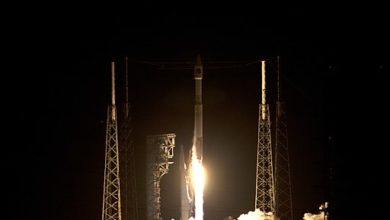Science
Earth Has Not One But Three Moons Orbiting, Confirms New Study
The two newly discovered Earth-orbiting moons are essentially just dust clouds

A breakthrough study has found Earth has not one, but three moons orbiting. After years of research and study, Hungarian astronomers and physicists have finally confirmed the existence of two Earth-orbiting moons that go unnoticed as they’re essentially just dust clouds.
The researchers found the mysterious clouds lurking at just 250,000 miles away from the earth, roughly the same distance as the moon. They made use of advanced polarizing filters on their cameras and finally succeeded to spot the scattered light reflecting off the individual particles within the dust clouds. Each cloud measures about 15 by 10 degrees wide, which means they cover an estimated area about 105,000km by 72,000km, almost nine times wider than the Earth.
The discovery confirms the 1961 theory put forward by Polish astronomer Kazimierz Kordylewski that dust clouds orbit the earth. He spotted the giant balls of dust while investigating two points in the Earth-Moon system where two gravitational forces interact in a way that stabilizes the position of objects, known as a Lagrange point.
The clouds have been named as “Kordylewski clouds,” after Kordylewski as he was the first person to spot them back in 1961, reported National Geographic.
“The Kordylewski clouds are two of the toughest objects to find, and though they are as close to Earth as the moon, are largely overlooked by researchers in astronomy,” study co-author, Judit Slíz-Balogh, said in a statement. “It is intriguing to confirm that our planet has dusty pseudo-satellites in orbit alongside our lunar neighbor.”
The newly confirmed “moons” are just huge, thin clouds of dust that are trapped in Earth’s orbit. The clouds are not visible with the naked eye, but, sometimes, due to sun’s reflection, these dust clouds appear lightly.
The new findings have been described in the Monthly Notices of the Royal Astronomical Society.






